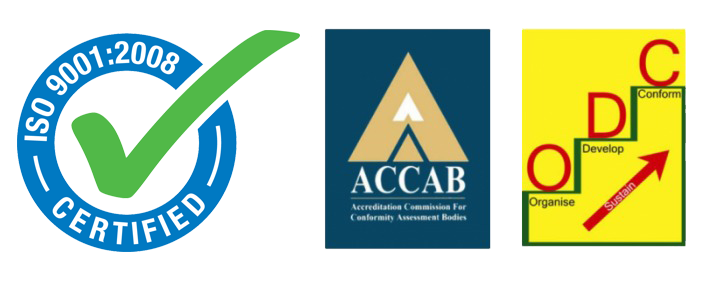
HOW TO MAKE AN SEO-OPTIMIZED MULTILINGUAL BLOG ?
by Dr. Abu Mazhar Khalid Siddique - January 31, 2023
English is the most popular language on the web, with 26% of all web content written in English as of January 2020. Nevertheless, only 17% of the world's population speak English. That leaves an estimated 6.5 billion people without a home. So, if you want to reach out to a massive audience, create a multilingual blog. You can assume that you only need to write in one language when creating a blog. Having a multilingual blog can help you expand your reach and capture even the smallest portion of the 6.5 billion people who don't speak the internet's most popular language.
The five simple tips on creating an SEO-optimized multilingual blog will help people find your content in their native language.
The importance of a multilingual blog
Would it be possible to reach the entire world with your blog? However, with a multilingual blog, you can achieve this.
A multilingual blog is beneficial if you have international clients or customers or if your target audience speaks different languages.
It is essential to have a multilingual blog that can cater to readers worldwide, especially with internet penetration rates increasing around the world, especially in Asia. If you have multilingual content for everyone who needs it, from potential business partners to individual consumers, your brand will appear more trustworthy.
Whenever it comes to SEO, every language is an entirely different entity. New languages mean reaching a whole new group of people that were not previously exposed to your content. To capitalize on these benefits, you can build an SEO-optimized multilingual blog.
1. Focus On URL Structure
Running a multilingual blog is a primary concern for duplicate content. Google is unable to determine which piece of content to show users if you have a French and English version of the same blog post. Your content will not rank well on the search engine results pages. When Google sees the same content on multiple pages, it will ignore all the duplicate pages and only show the first version of the content on the SERP.
You can avoid this issue by creating unique URL strings for each language version, which will ensure that they are always different from each other. Their informational content about telematics, fleet safety, compliance and DVIR have been adapted to adhere to the native languages of their audiences worldwide since they offer products in different regions.
To achieve best practice, Google recommends the following URL structures:
- Country-specific domain: samsara.mx
- Subdomains: mx.samsara.com
- Subdirectories: samsara.com/mx/
A subdirectory is a great option because they are easy to set up and maintain. Since you do not need to purchase a separate domain, they are cost-effective. The subdirectory URL structure is used by Apple as well.
2. Add Hreflang annotations
Annotations from Hreflang are a language targeting tool that helps search engines understand the relationship between your different page versions.
When there are translated versions available, they can help you reach more users by showing them the correct version of your content in their language and country.
Suppose you want to show French-speaking users a version of your blog post in French. In that case, you would add hreflang annotations to it so that Google would look at the HTML code.
<link rel=”alternate” hreflang=”fr” href=”homeandjet.com” />
If you would like to share this blog post on Twitter, you can use this HTML code:
Complex: If you would like to share this blog post on Facebook
<link rel=”alternate” hreflang=”fr-ca” href=”homeandjet.com” />
3. Translate your data into another language
One of the best ways to improve your site's technical SEO is to use metadata. This will make it easier for search engines to crawl and index your content. The main areas where you need to translate your metadata are:
- Meta description
- Meta title
- Meta keywords
Metadata can help readers find your content. When you look at the results page on Google, you will see the meta title and meta description of the content.
Your SEO strategy will only improve one aspect if you only translate your blog content without touching the meta. The secret sauce to improving your organic click-through rates is translating your metadata.
4. Language-specific research can be done
Any good SEO strategy starts with keyword research. To attract more readers to your website, the process helps you discover the right keywords. Every multilingual blog should start with keyword research. By only conducting keyword research for one language, you don't want to miss out on sizable audiences.
It would also benefit from a translated post in Spanish, since this blog post provides information on the cost of moving across the United States. It is important to note that your keyword will not be identical in the translated language.
To get the most out of your multilingual blog post, you must conduct keyword research in the appropriate language and target market. You can use Ahrefs, Semrush, and other SEO tools to help you perform keyword research on the translations.
Ahrefs shows that "mudanzas baratas" and "camiones de mudanza" have a decent search volume and low keyword difficulty on the moving topic. Keyword options when writing a translated Spanish post about moving costs in the US are excellent.
It's always a good idea to have native speakers, check your multilingual content. Using this control check will help you avoid awkward mistakes and ensure that your content is relevant to local audiences.
5. Don’t use a machine translation
Instead of using code-level information such as lang attributes or the URL, Google uses the content of your page to determine its language. Make sure all the text on your blog posts is in one language.
Automatic translators don't always produce the most accurate word-for-word translations, so Google recommends avoiding them. They can create a poor user experience, appear spammy, and harm your website's reputation.
You could instead consider hiring someone who speaks the native language to translate your blog content, or outsource it to a professional translation service.
Don't run your blog through an automatic translator, it could damage your content. Even though it seems like it has everything covered, it will do more harm than good.
Our company has a team of translators who can quickly and accurately translate and have the translation attested, if needed, for all languages. We translate into English, Urdu, Arabic, Spanish, German, Persian, French, Japanese, Italian, Korean, Russian, and all other Indians and local languages. The translation will be checked out by our professional proofreaders. We also offer a courier service to send finished documents to our customer’s addresses.
- Also Read :- Certificate of registration translations (JILT - Certified Translation Services)
- Also Read :- Certificate of Origin Translation Services
- Also Read :- Power of attorney translation (JILT - Certified Translation Services)
- Also Read :- Legal Documents Translation
- Also Read :- Apprenticeship certificate translations (JILT - Certified Translation Services)
- Also Read :- Article of Association Translation Services
- Also Read :- HOW TO DEVELOP COMMUNICATION ABILITIES IN THE WORKPLACE
- Also Read :- A ROADMAP FOR CHOOSING THE BEST TRANSLATION MANAGEMENT SYSTEM
- Also Read :- Diploma translations (JILT - Certified Translation Services)
- Also Read :- European Day of Languages (EDL) 2020
Search
Categories
Archives by Month
Popular Blog
QUICK TRANSLATION QUOTE
Need help with a translation?
Get in touch with us
Whether you have a specific project you want to discuss, need a translation quote or simply want to discuss your requirements, do not hesitate to get in touch with us.











Social Networks